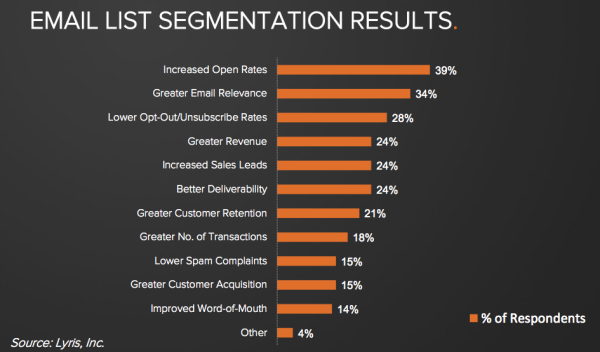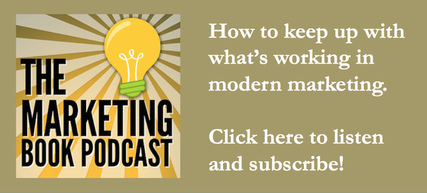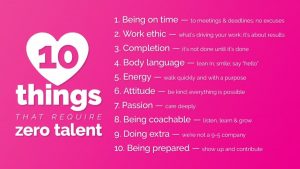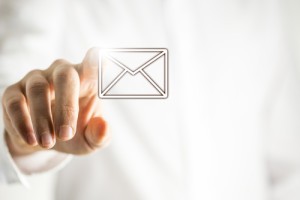Are you worried prospects will think your email marketing is spammy? They won’t if your focus is on them, what they need and when they need it. 
Email marketing has gotten a bad rap. Like other innovative technologies that marketers have gotten hold of over the years, it’s become the object of much derision.
Gary Vaynerchuk famously talks about how “marketers ruin everything.” In this excerpt from an Inbound Conference keynote, he singles out email. (Warning: graphic language.)
Because of this widespread contempt for email marketing, some companies are reluctant to fully embrace the power and effectiveness of email marketing.
That’s too bad, because email marketing is the connective tissue of all Internet marketing. According to McKinsey, email marketing is 40 times as effective at customer acquisition than social media.
Email drives increased website visitors, helps convert website visitors into leads, helps nurture leads into customers and, perhaps most importantly, helps deepen your relationship with customers.
If you can deliver the right content to the right audience at the right time, your email marketing will supercharge your lead generation, sales closing percentages and customer satisfaction (and upsales).
So how do you go about unlocking this mysterious power of email marketing? It’s no mystery. But it does involve some thought and planning.
Here are the three most important things to creating effective email marketing that your prospects won’t hate. In fact, they’ll love it.
1. Determine Who Your Audience Is
Think about your buyer persona. In Adele Revella’s “The Buyer Persona Manifesto,” she offers this definition of a buyer persona:
“It’s an archetype, a composite picture of the real people who buy, or might buy, products like the ones you sell.”
Buyer personas are like an avatar crafted from direct interviews with as many buyers as possible. And from their behavior observed at conferences, social media, etc.
If you don’t have one, do some buyer persona research to find out who your real buyers are (sometimes it’s not who you think).

When researching buyer personas, ignore extraneous things about them like hobbies and instead focus on what Revella calls “The Five Rings of Insight™” –
- Priority Initiatives – What causes certain buyers to buy from a company like yours, and how are they different from buyers who remain attached to the status quo?
- Success Factors – What operational or personal results does your buyer persona expect from purchasing from you?
- Perceived Barriers – What concerns cause your buyer to believe that your company is not their best option?
- The Buyer’s Journey – What process does this persona follow in researching and selecting a solution that can overcome the Perceived Barriers and achieve the Success Factors?
- Decision Criteria – Which aspects of the competing offerings do your buyers perceive as most critical, and what do they expect from each one?
2. Segment Your List
Studies show that email lists deteriorate by about 25% per year. So, a list with 10,000 will have 5,625 viable contacts in 3 years. List deterioration is primarily because people change jobs (and email addresses) and unsubscribe for various reasons.
The way to keep your email list working hard (and on a net growth trajectory) is to segment it. In other words, don’t send the same message to everyone on your list.
Segmentation works. According to research by Lyris, Inc., email list segmentation helps drive results. When marketers were asked to indicate their top three results of using segmented email lists, 39% experienced higher open rates, 28% experienced lower unsubscribe rates, and 24% experienced better deliverability and increased sales leads.

Here are additional examples of segmentation you can do to improve your email marketing results:
- Geography – This is effective if the location of your recipient has an effect on the sale. For instance, does your business have geographic limitations? Is there an event within a certain geographic area that pertains to the recipients? Geographic segmentation can include IP area, time zone, area code and address.
- Industry/Company – If your customers or prospect are in different industries (and have indicated such), targeted emails about their specific industry will have greater relevance. Additional segmentation can include company type (B2B, B2C, B2G, etc.) or company size.
- Job Title (or Role) – Just like with your buyer personas, an email that speaks to the issues or concerns of a business owner might be different from a non-management employee.
- Behavior – One of the best segmentation approaches is to send email based on what someone has already downloaded from your site, which emails they’ve opened and which (and how many) pages they have viewed.
A word of caution about email list segmentation: keep it simple. With marketing automation software, the segmentation possibilities are seemingly endless. Don’t go too far in that direction, at least not at first.
3. Send The Right Content At The Right Time
The people on your list are at widely varying stages of the customer lifecycle. Are the people on your list researching how to solve a problem? Researching solutions providers like your company? Are they a customer?
The emails that you send to prospects need to overlay (as much as possible) with where they are in their buying cycle.

TOP – For instance, in the top of the cycle, a prospect is is expressing the symptoms of a problem or an opportunity. The problem doesn’t have a name yet and they aren’t sure what their problem is. They probably need more educational research to get their arms around the problem. They won’t be interested in information about your company.
MIDDLE – Once the buyer has given a name to their problem or opportunity, they then start to consider all the available approaches/methods to solving their problem. Content that is most relevant to the buyer at this stage would help him weigh his options such as comparison white papers, expert guides, webinars, videos, etc.
BOTTOM – Later, the buyer may reach that stage when they have defined their solution strategy, method, or approach. They are starting to compile a list of available vendors and products within their solution strategy. Here, they will need supporting documentation, data, benchmarks or endorsements in order to make or recommend a final decision. This is when they will be receptive to information about your company. The right content for this stage includes vendor (or product) comparisons, case studies, trial download, a live demo, product literature, etc.
Conclusion
Email marketing, when done right, can delight your prospects and help build a relationship with your company even before their first conversation with a sales person. But it needs to be all about the prospect – who they are, what information they need and where they are in their buying journey.
photo credit: The Bait via photopin (license) | Charts: HubSpot
(291)
Report Post




